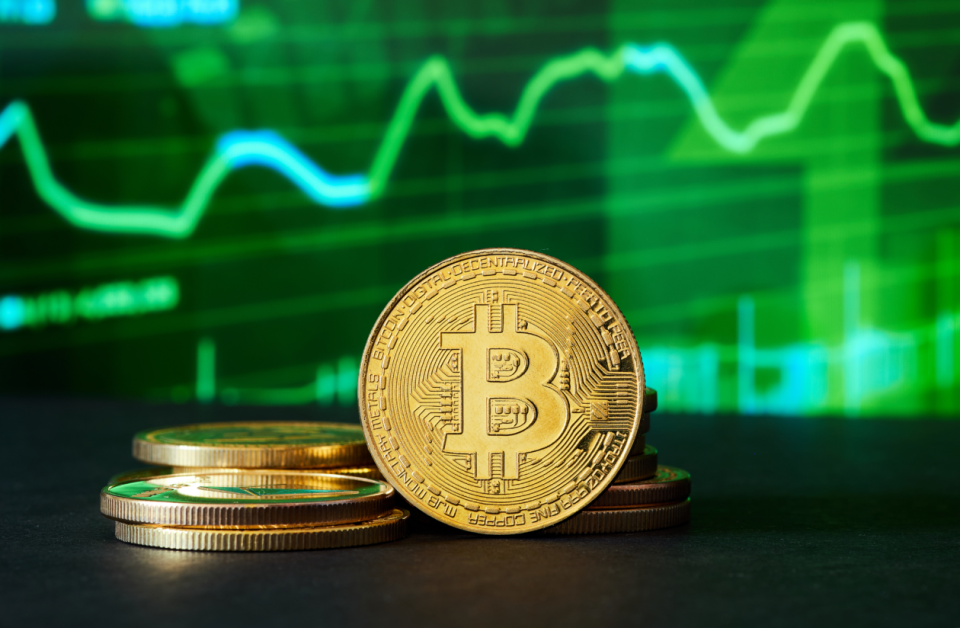Bitcoin leads crypto rally as central banks pledge liquidity to stem rising banking risks


Bitcoin jumped over the weekend to breach $28,000 in a bullish trend that extended into Monday morning trading in Asia and helped send most of the top 10 non-stablecoin cryptocurrencies higher. Bitcoin led the gainers amid growing concern about the state of the global banking industry. Several central banks said at the weekend that they would coordinate an effort to pump cash into markets to ensure liquidity. This comes after Swiss authorities orchestrated a crisis takeover of global investment bank Credit Suisse by UBS at the weekend, which again followed a series of bank failures in the US this month.
See related article: Weekly market wrap: Bitcoin rises above $26,000 as ‘store of value’ narrative strengthens amid bank failures
Fast facts
-
Bitcoin rose 2.96% in the last 24 hours to USD 27,929 at 09:00 a.m. in Hong Kong to deliver a weekly gain of 23.24%, according to CoinMarketCap data. The world’s largest cryptocurrency is up more than 66% year-to-date and briefly traded above $28,000 over the weekend, breaching that ceiling for the first time since June 12 last year.
-
The main driver behind Bitcoin’s gains is concern about the fragile economic landscape in the United States, Kadan Stadelmann, CTO of blockchain infrastructure development firm Komodo, told Forkast on Friday.
-
“The Federal Reserve embarked on a multi-trillion dollar program of quantitative easing, cutting bank minimum reserves from 10% to 0% on March 26, 2020, and ushering us into the current battle with inflation, which has people seeking alternative ways. to preserve wealth. Bitcoin has become a prominent alternative,” Stadelmann wrote.
-
Ether fell 0.02% to $1,777, but is up 9.24% in the last seven days.
-
XRP rose 2.61% to $0.3874, up 3.04% for the week. Paul Grewal, chief legal officer at Coinbase, hinted in a interview with Thinking Crypto last Friday that Coinbase may relist XRP.
-
Polygon’s Matic token fell 2.30% to $1.16, paring its gains for the week to just 0.23%, even after Polygon Labs unveiled a partnership with software giant Salesforce last Thursday to develop NFT-based loyalty programs.
-
The banking turmoil dominated movements in capital markets and could force the Federal Reserve to revise its monetary policy to raise interest rates, increase inflation risks and prompt more investors to view Bitcoin as a safe haven, according to a Bloomberg News report on Monday.
-
The total crypto market capitalization rose 1.46% in the last 24 hours to $1.17 trillion. Total trading volume in the last 24 hours fell by 2.70% to $65.76 billion.
-
Concerns about the banking industry drove US stocks lower on Friday. The Dow Jones Industrial Average fell 1.19%, the S&P 500 fell 1.10%, and the Nasdaq Composite Index fell 0.74%. Shares of First Republic Bank fell 32.80% on Friday despite a $30 billion injection from major US financial institutions earlier this week.
-
The Federal Reserve announced on Sunday a coordinated move with the central banks of Canada, Britain, the European Union, Japan and Switzerland to make more US dollars available to improve market liquidity.
-
The move to pump cash into markets helped U.S. stock futures rise as of 9:00 a.m. in Hong Kong on Monday. Dow Jones Industrial Average futures rose 0.19%. S&P 500 futures rose 0.28%, while the Nasdaq Composite Index rose 0.41%.
-
On the inflation front, the University of Michigan on Friday reported an unexpected drop in the US consumer price index in March, the first decline in four months. The report indicates that the Federal Reserve’s higher interest rate policy over the past 12 months is cooling inflation.
-
U.S. interest rates are between 4.5% and 4.75%, the highest since October 2007. Analysts at CME Group expect a 76.8% chance the Fed will raise rates by 25 basis points when the bank meets this week, and a 23, 2% chance of no rate hike, up from 20.3% on Friday.
-
The US consumer price index (CPI) rose 6% from a year earlier in February, down from 6.4% in January, but still well above the Fed’s goal of keeping annual inflation below 2%.
See related article: Ripple executives say XRP lawsuit settlement will have little impact on global business operations
























